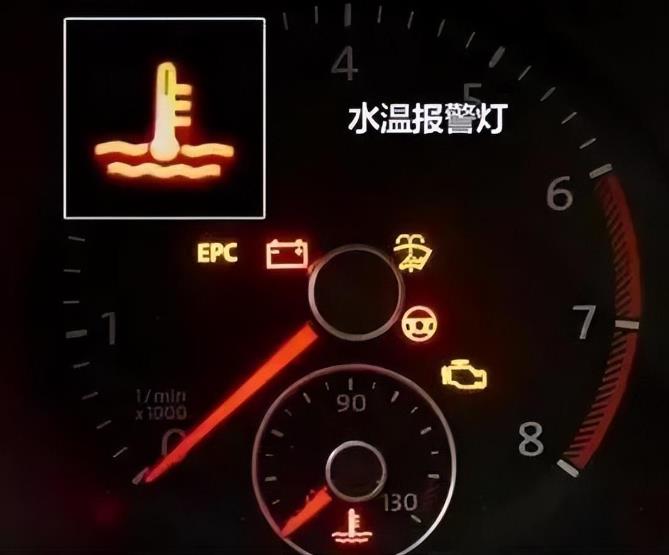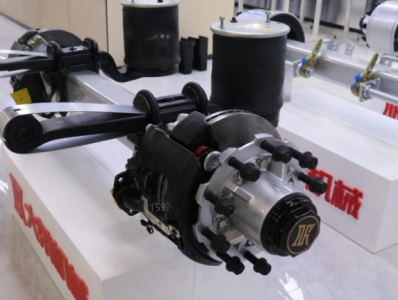What should I do if the engine water temperature exceeds 95°C?
Just entering the dog days, many cities across the country seem to have turned on the "stove" mode, and the scorching summer has also caused a severe test for the use of vehicles. Many car owners found that the temperature of the vehicle's water temperature gauge continued to rise during driving, and worried that the engine would overheat and boil, causing the vehicle to spontaneously ignite.

In fact, as long as the vehicle engine works normally, even in hot summer, its temperature will not change with the rise of the external temperature, but will fluctuate within the set temperature range, generally kept between 85°C-95°C It is usually around 90°C, but in summer, the engine heats up faster, and the process of entering the large cycle is also faster, and the cooling fan will be started more frequently.
The owner can also judge the engine temperature through the water temperature pointer on the instrument panel. Generally, a red area will be marked on the bottom side of the water temperature gauge to indicate the high temperature area. If the water temperature pointer approaches or reaches this area, the owner should pay attention. At this time, the water temperature is too high, which may affect the vehicle.
If this problem occurs while driving, the first thing the car owner has to do is to slow down and stop on the premise of ensuring safety, and restart the vehicle after the engine cools down. If the water temperature frequently exceeds 95°C, it is a vehicle failure and the vehicle should be driven to the nearest repair shop for repairs. Don't believe in the so-called "speeding up and driving faster can blow the wind to cool down", that will only make the engine generate more heat that cannot be dissipated, and cause greater damage to the engine.
Under normal circumstances, the main reasons for the high temperature of the vehicle engine are as follows. The DARO trailer axle is briefly summarized:
1. Lack of coolant
Coolant, commonly known as "antifreeze", some car owners think that its function is only antifreeze, so they don't pay much attention to it in summer. In fact, it has the functions of cooling, antifreezing and anti-boiling at the same time, which is also essential in summer.
Some car owners like to replace the coolant with water. Because the two have different boiling points, if only water is added, the water tank will boil when the engine temperature rises slightly, which will damage the engine, form scale and oxides, block the radiator and water channels, and the gain outweighs the gain.
When the engine water temperature is too high, we can check the liquid level of the coolant by ourselves. If it is lower than the minimum scale, we must add it in time. If the water temperature continues to be too high after adding, you can check the cooling liquid level again. If the liquid level drops, it means that the cooling liquid is leaking and must be dealt with as soon as possible.
It is worth noting that even if the coolant is not missing, the owner should observe whether the cooling has exceeded the validity period. Generally, the validity period of the coolant is about two years. It will corrode system parts, so it is recommended to replace them all.

2. Thermostat failure
The thermostat is an automatic temperature adjustment device that comes with the vehicle. Its main function is to control the flow rate of the coolant and the amount of water entering the radiator. By changing the range of water circulation, it can adjust the heat dissipation capacity of the cooling system to keep the engine temperature at the set value. within the range. If the vehicle is behaving normally with antifreeze and water tank, but the water temperature is too high, the most likely culprit is a faulty thermostat.
So how to check whether the thermostat is faulty? The thermostat can be removed and heated in water. Generally, the temperature at which the valve starts to open is about 80°C, and the temperature when it is fully opened is generally about 90°C. The lift of the valve is generally 7~10mm , as long as its performance meets the above criteria, it can continue to be used. Otherwise, replace the thermostat with a new one.
3. The radiator is blocked
Especially after spring and summer catkins, poplar catkins, fallen leaves, flying insects, etc., the owner of the car should observe whether the radiator on the front of the car is covered and blocked. If there is such a phenomenon, you can deal with it yourself.
After removing the air intake grille, just rinse it directly with a large flow of water, pay attention to the pressure of the spray spray not to be too high, and the direction of the water spray should be perpendicular to the water tank as much as possible to avoid damage to the radiator fins.
4. Cooling fan failure
When the vehicle speed is too low, the cooling fan will start to work to assist the engine to cool down. When the cooling fan fails, the water temperature will naturally be abnormal.
In addition, you can also observe the tightness of the belt of the cooling fan. If it is too loose, the speed of the fan and water pump will not be enough, and it will not be able to provide sufficient cooling effect.

5. The water channel of the cylinder body is too dirty
This is also one of the reasons for the overheating of the engine water temperature. If the cooling channel of the cylinder block is too dirty, such as scale adhesion and dust clogging, the water flow will become smaller, which will affect the water circulation efficiency, prevent the coolant from functioning, and cause the engine water temperature to be too high. Since the cooling channel of the cylinder block is inside the engine, it is difficult to clean it. In addition to finding a professional repair shop, it is also very important not to choose low-quality antifreeze.







